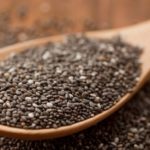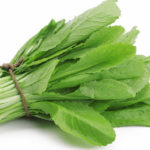There has been a growing emphasis on plant-based diets, with experts recommending an increase in fruit and vegetable consumption for optimal health. The Centers for Disease Control and Prevention (CDC) in the United States has released a ranking of 41 of the most nutritious fruits and vegetables, highlighting their exceptional nutritional value. Among them are three types of vegetables that are particularly popular in Vietnam during the fall and winter seasons.
Watercress
Once a wild plant growing in rice paddies and irrigation ditches, watercress is now commonly cultivated in Vietnam during the winter months. It has earned the highest rating among cruciferous vegetables by the CDC for its exceptional nutritional value. Watercress leads the way in terms of nutrient density and nutritional content. Notably, it is an excellent source of vitamin K, which plays a crucial role in bone health by regulating bone protein, reducing calcium excretion, and enhancing calcium absorption. Watercress also helps lower the risk of osteoporosis and promotes bone healing by stimulating bone regeneration.
Additionally, watercress is rich in lutein and zeaxanthin, offering benefits for cardiovascular health. These compounds help prevent atherosclerosis, thereby contributing to stable blood pressure.
Watercress boasts an impressive nutritional profile, containing over 15 vitamins and minerals, including potassium, calcium, and magnesium, which collectively support healthy blood pressure and help prevent atherosclerosis.

Watercress Leads the Pack in Nutritional Quality
Napa Cabbage
Napa cabbage, a vegetable that has gained popularity in Vietnam in recent years, is now widely cultivated and available. It boasts a rich concentration of isothiocyanate and sulforaphane, potent antioxidants that enhance the liver’s detoxification capabilities and promote faster detoxification. These compounds also help protect cellular DNA, thereby inhibiting the development of cancerous cells.
Napa cabbage is beneficial for eye health due to its high lutein content, which mitigates the harmful effects of blue light from mobile devices and computers. However, nutritionists advise pairing it with darker green vegetables to ensure a balanced intake of chlorophyll, folic acid, and other essential nutrients, as its light green color indicates a lower concentration of these compounds.

Napa Cabbage: A Popular Choice
Broccoli

Broccoli: A Superfood for Your Health
A study by Harvard University found that participants who consumed five servings of cruciferous vegetables weekly had a more than 50% lower risk of bladder cancer compared to those who did not. Bladder cancer predominantly affects men, with a two to three times higher incidence rate than in women. Broccoli also helps regulate homocysteine, an amino acid associated with an increased risk of heart disease and stroke.
Dangers of Microwaving Certain Foods
Many of us rely on microwaves to quickly prepare meals or snacks, but caution must be taken as some foods can be dangerous to health when heated in this appliance. Breast milk, broccoli, defrosted fruit, and other items should not be placed in microwaves, so it’s important to educate oneself on which foods are safe for use in this appliance.



































